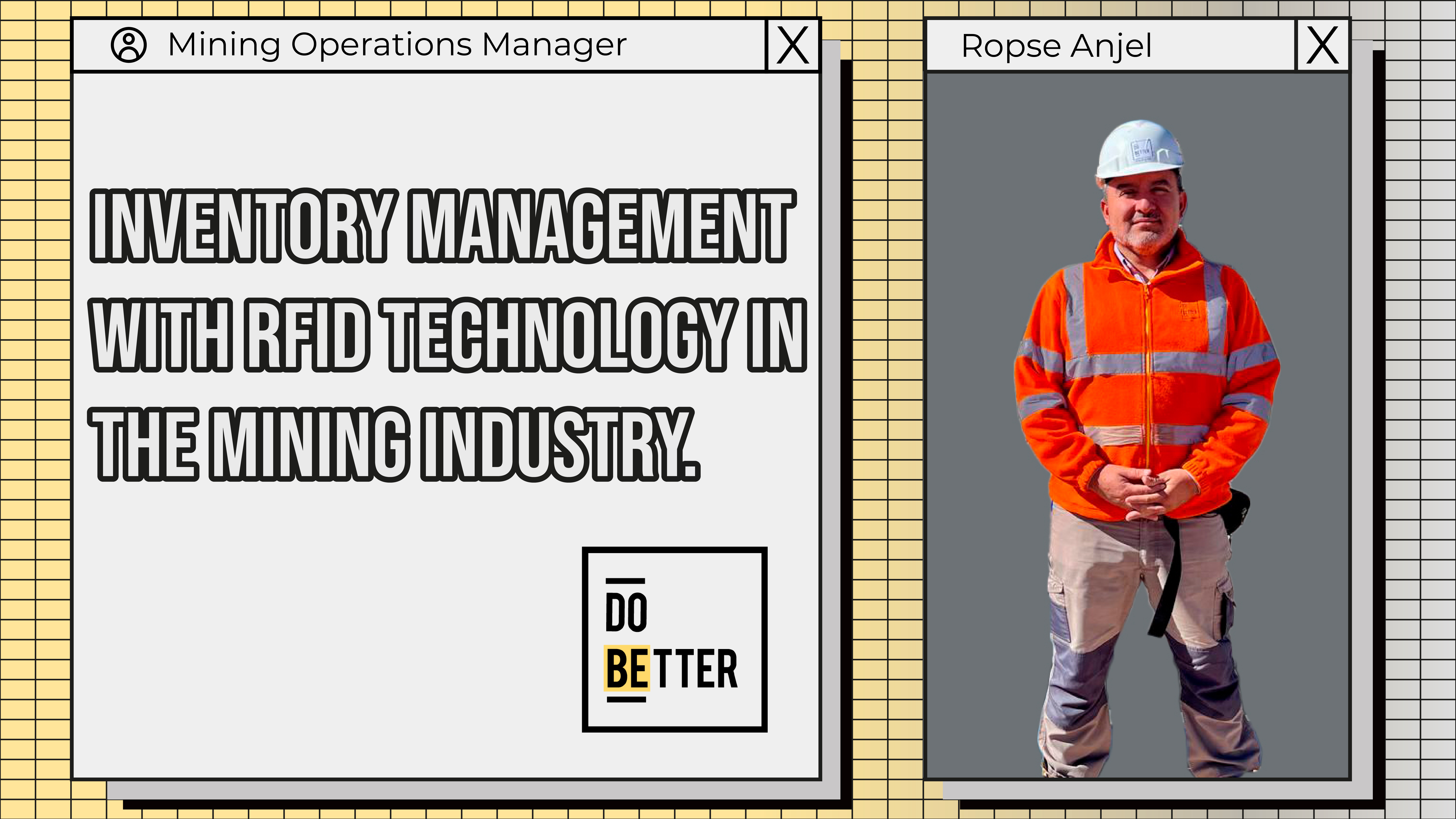How has RFID technology improved inventory management in the mining industry?
Ropse Anjel: RFID technology is a very useful tool to control inventories, especially in mining where distances are large and there are products of both high and low criticality, this technology provides through its various TAGs a control focused on the type of asset. It provides visibility and traceability that can be integrated with warehouse management systems, ERP, among others. This allows minimizing losses, speeding up stock replenishment or planning purchases with greater assertiveness, avoiding cost overruns.
What are the main advantages of using RFID tags for mining asset tracking?
Ropse Anjel: The first advantage is the effective control of inventories through the identification of products and their location via geolocation, which reduces the time in the execution of cyclical inventories by more than 50% and also reduces the amount of lost materials. TAGs are
classified into passive and active, the first one does not emit its own signal and then it is only identified with RF readers, usually to control assets of medium or low
criticality. On the other hand, there are active TAGs which do emit their own signal within a geofence, always showing their location
online and are therefore used to tag products of high operational criticality.
What impact has the implementation of RFID technology had on the mining industry in terms of the use of available resources?
Ropse Anjel: Having a reliable inventory controlled with RFID technology reduces many costs, such as storage, transportation, planning, among others.
This means that optimized resources can be redistributed to other functional areas, increasing the company's profitability.
How does RFID technology help to improve efficiency in the management of logistics processes in mining?
Ropse Anjel: Each one of the supply chain processes is optimized by having a reliable inventory, for example, with RFID you can receive a complete truck in mining just by passing the load through the radiofrequency portals, which clearly reduces the time of the reception or dispatch process thanks to the tags. This practice is feasible and very profitable in mining because there are transit warehouses. In addition, inventory reliability is the input for purchasing and supply, so lead times are considerably reduced.
Finally, on site the warehouses or yards are huge, so the location or picking is also facilitated by RFID.
What are the main challenges facing the implementation of RFID technology in the mining industry?
Ropse Anjel: Implementing RFID technology in the mining industry can face several challenges, including resistance to change, climate or the large amount of assets that mining companies typically have.
As for resistance to change, it can be a significant obstacle because workers may be reluctant to adopt new technologies, especially if they are unfamiliar with them. This may be due to lack of adequate training, concerns about job security and uncertainty about how the technology will
affect their daily work. To overcome this challenge, it is important to involve workers throughout the implementation process by providing training and education about the technology and its benefits.
Another challenge facing the implementation of RFID technology in the mining industry is the weather factor. Extreme weather conditions, such as rain, wind and snow, can affect the implementation of the technology, delaying the tagging process. In addition, the mining
environment can be especially challenging, as assets can be exposed to harsh conditions such as dust, water and vibration, which can be solved with the right hardware depending on the location of the site and the quality of its material storage facilities.
How is the security of data collected by RFID technology in the mining industry ensured?
Ropse Anjel: This is a complementary tool to be used, for example, our application can be integrated with various WMS platforms. The implementation of our platform serves to verify if
there is a deviation or failures in the execution of actions in the WMS platforms, such as products incorrectly discounted and / or entered among other movements.
What features should an RFID tagging system have to meet the needs of the mining industry?
Ropse Anjel: One of the main characteristics is to have the autonomy of work, for example, lack of electricity, for this we created an autonomous system with solar energy. On the other hand, the products that are outdoors are exposed to extreme environmental conditions, so it is very
important the type of label to use.
What future do you see for the implementation of RFID technology in the mining industry?
Ropse Anjel: Currently many people in the mining industry do not realize that they are already
using this technology, it is not only applicable to logistics or inventory control. It can also be used in vehicle control,
personnel control (entry to critical places). In general, it is a tool compatible with many management systems in any industry to optimize the use of resources and increase the profitability of the organization.


